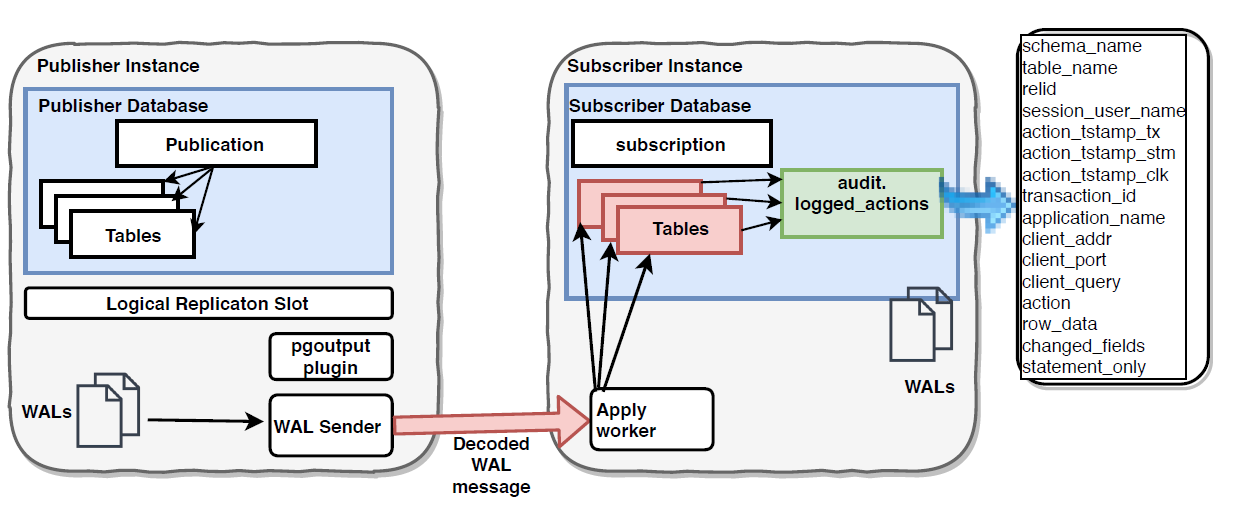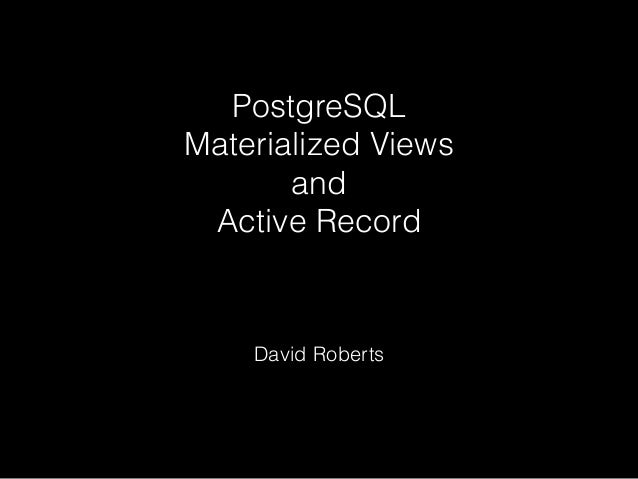CREATE MATERIALIZED VIEW defines a materialized view of a query. Simple views can be also updatable. PosgreSQL extends the view concept to a next level that allows views to store.
The simplest way to improve performance is to use a materialized view. A materialized view is a snapshot of a query saved into a table. To execute this command you must be the owner of the materialized view. The old contents are discarded. If WITH DATA is specified (or defaults) the backing query is executed to provide the new data, and the.
This is working really well for us. In this post, I’ll review what materialized views are, when you should consider using them, and what we learned while bringing them into our project. Refreshing all materialized views.

Hi, I need to implement incremental refresh of materialized view. Please let me know how to do the incremental refresh of materialized view in postgresql. Everything is working great. Users selecting from the materialized view will see incorrect data until the refresh finishes, but in many scenarios that use a materialized view , this is an acceptable tradeoff. I will go over an example and explain the details.
Materialized view is a view of a query that is physically materialized. In my example I will use the table I created in the article “How to Create a View in PostgreSQL“. We create a materialized view with the help of the following script.
I would think that this feature adds a lot to PostgreSQL , especially if, as shammat mentions, the engine is able to re-write queries to use the materialized view. But materialized view refresh given by postgresql will do complete refresh and this. Within SQL Server, this alone makes materialized views worth some of the configuration trouble.
In PostgreSQL , like many database systems, when data is retrieved from a traditional view it is really executing the underlying query or queries that build that view. Pass in the name of the materialized view , and the name of the view that it is based on. Note that you have to create the view first, of course. This function will see if a materialized view with that name is already created. If so, it raises an exception.
Otherwise, it creates a new table from the view , and inserts a row into the matviews table. The query is executed and used to populate the view at the time the command is issued and may be refreshed later. Note: Support from PostgreSQL 9. Without this option a refresh which affects a lot of rows will tend to use fewer resources and complete more quickly, but could block other connections which are trying to read from the materialized view.
Snapshot retrieves data very fast. I finally got a chance to give it a try. Postgres achieve the ability to refresh materialized views concurrently. With this we now have fully baked materialized view support, but even still we’ve seen they may not always be the right approach. For those of you that aren’t database experts we’re going to backup a little bit.
BUILD IMMEDIATE: the materialized view will be populated immediately. BUILD DEFERRED: the materialized view is populated on the next refresh operation. AS select_query: the query that is run, with the stored in the materialized view. The syntax above is just a small extract of the possible syntax.
Use the REFRESH MATERIALIZED VIEW command to update the content of a materialized view. However, materialized views in Postgres 9. This basically blocks any attempts to read a materialized view while it is being refreshed with new data from its parent relations, which is particularly a handicap for large materialized views on production servers. ALTER MATERIALIZED VIEW changes various auxiliary properties of an existing materialized view. To alter the owner, you must also be a direct or indirect member of the new owning role. Hi jharr, The postgresql connector, from version 7. But I am not sure if you are using the connectors or if you are using Information Services (jdbc through the Spotfire Server) as you mention Information Designer as well.

So I used to think materialized views in Postgres would be an awesome feature. You can specify when to refresh the data in a materialized view : when changes to the underlying objects are committe on deman at specified time intervals, or never refresh. Using materialized views against remote tables is the simplest way to achieve replication of data between sites.
Hiç yorum yok:
Yorum Gönder
Not: Yalnızca bu blogun üyesi yorum gönderebilir.